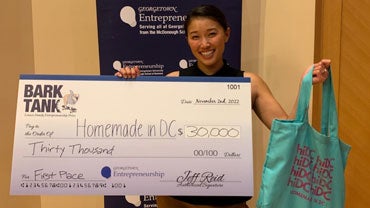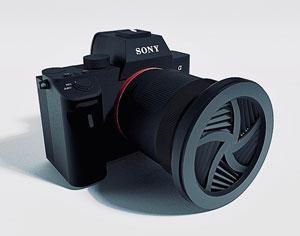
Two of the finalists in the 2022 Bark Tank competition, held November 2, made significant use of the Maker Hub to develop their businesses.
Mackenzie Loy (MSB'22) used the Maker Hub to create custom tote bags for her business, Homemade in DC, which won one of the $30,000 grand prizes. Homemade in DC offers custom gift boxes and corporate catering, sourcing everything locally from women of color or LGBTQ+ entrepreneurs. “Our mission is to close the racial and gender wealth gap through food entrepreneurship,” Loy said.
Homemade in DC currently works with 25 local entrepreneurs, and she said about 80% of revenue goes directly to them. “We provide entrepreneurs both marketing and distribution, creating a new revenue source that helps them grow,” she adds. In the long term, she hopes to scale the idea to other cities.
Loy created the tote bags for a partnership with Pacers Running during Women’s History Month. She used the laser cutter to make a stamp and then printed the bags on the etching press. She has also used the Library’s studio spaces to take promotional photos for her business.

Tessen, a company led by Kilian Liptrot (L'23) that creates innovative photography accessories, won $15,000 in the competition. Tessen’s first product is a patent-pending lens blade—a cap that can be permanently attached to protect the camera lens and that does not need to be removed to take photos.
“It improves the photography experience while offering real protection,” Liptrot said. Protecting the lens is vital for photo quality, but lens caps can be unwieldy and easy to lose—and a potential barrier for photographers. Liptrot cited a survey of 1,200 photographers in which a quarter of women said they have had to store their lens cap in their bra strap because they didn’t have pockets. “I thought of athletics, and how if a woman couldn’t perform on the track because they couldn’t get the right equipment, it would be solved in ten minutes,” Liptrot said.
In the Maker Hub, Liptrot learned TinkerCAD from one of the volunteers and started iterating. He went through more than 25 versions, creating them with the Maker Hub’s 3D printers and woodworking equipment, before he had a working prototype.
“I love the Maker Hub because it’s such a collaborative environment,” he said, adding that he hopes to work with other photographers as he develops future products for his business.
